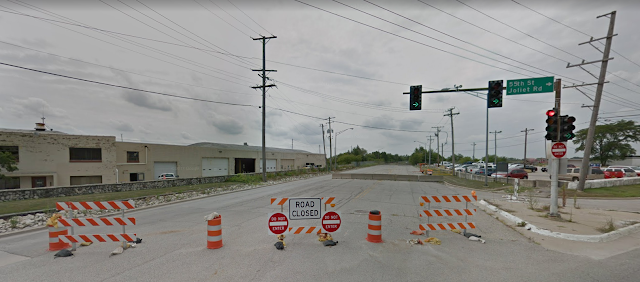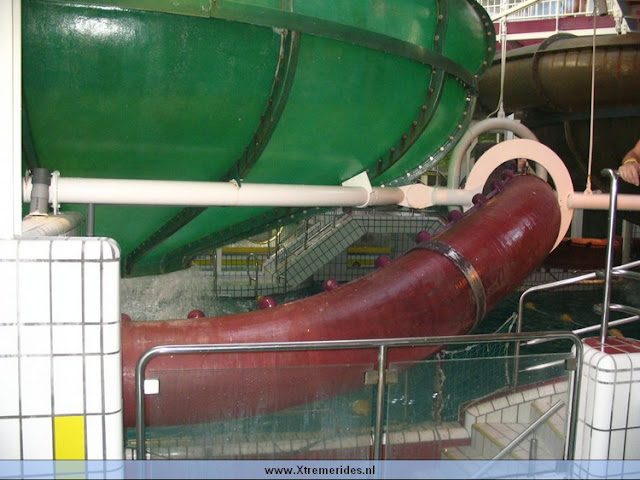How the AI Boom Repeats the Mistakes of Abandoned Railroads
 |
| It's safe to say these tracks have captivated me. |
I've also learned a lot about why so many of these lines were abandoned, and how many lines were not built for purpose, but as a result of the cutthroat nature of rail tycoons, especially during the 19th century. And yet, it doesn't seem like we've learned a lot from these mistakes when you consider the absolute toll that AI takes on data usage, and how much electricity it requires, at least, with the current AI developers. The 19th-century railroad frenzy offers a mirror to today’s feverish expansion of hyperscale data centers powering the AI revolution.
Both eras are defined by grand promises, speculative greed, and the quiet erasure of communities caught in their wake. But while railroads left behind physical scars, the data center boom threatens something more insidious: a digital landscape littered with forgotten servers, exploited labor, and environmental decay.
Let’s journey through these parallels—not to romanticize progress, but to question it.
In the 1800s, railroads were sold as the great equalizer, a force to unite a continent and uplift every town along their routes. Investors clamored to fund tracks that sprawled into deserts and mountains, often ignoring practicality. Towns like Jacktown, MI, or Sims, ND, to name two out of literally thousands of examples, sprang up overnight, only to collapse when the rails bypassed them or profits dried up. The 1873 Panic, among other railroad panics, triggered by railroad overexpansion, left behind empty depots and bankrupt communities—a stark reminder that infrastructure built on speculation often crumbles.
Today, we’re told AI will democratize knowledge, cure diseases, and usher in utopia. But like the railroads, its infrastructure—hyperscale data centers—is being built recklessly, often in remote regions lured by tax breaks. Will Prineville, Oregon, or New Albany, Ohio, become the ghost towns of the digital age when the AI hype fades?
 |
We are even rebuilding, and in some cases, building new, nuclear power plants to power these data centers. Nuclear power is often a fantastic resource for energy, and is quite safe and nearly carbon-free, but it would make more sense to use these facilities to power homes and businesses rather than a technology that has yet to materialize an actual business use case, other than the novelty of having an AI write a blog on Abandoned Railroads, as I ought to mention again.
 |
"Back to the future. The Three Mile Island reactor Unit 1 in Pennsylvania is one of two shutdown nuclear reactors (along with one at the Palisades plant in Michigan) that may be brought back online to supply electricity—a first in the United States. The two cooling towers at left are from Unit 2, which was permanently damaged in the 1979 accident." Constellation Energy. (Union of Concerned Scientists blog) |
Railroads clear-cut forests and displaced Indigenous communities; data centers drain water reserves and overload power grids. In places like Arizona or Chile, server farms compete with farmers and households for scarce resources. The cloud, it turns out, has a very earthly cost.
The railroad boom, of course, relied on exploited labor—Chinese immigrants, slaves, and displaced workers who died laying tracks through the Sierra Nevada. Today’s data centers depend on a hidden workforce: underpaid contractors maintaining servers, content moderators traumatized by AI’s darkest outputs, and communities displaced by rising energy costs. Meanwhile, AI threatens to automate jobs faster than it creates them, leaving behind economic ghost towns.
Even the promise of “progress” feels exclusionary. Just as railroads bypassed marginalized communities, AI’s benefits flow to tech elites while amplifying biases in policing, hiring, and healthcare. The tracks of the digital age, it seems, still run on old inequities.
The 19th-century railroad expansion wasn’t just a race to connect the continent—it was a cutthroat battle of egos among tycoons determined to dominate. Figures like Cornelius Vanderbilt, Jay Gould, and James J. Hill engaged in ruthless competition, undercutting rivals’ freight rates, sabotaging tracks, and building redundant lines purely to bankrupt competitors. Vanderbilt famously quipped, “Law! What do I care about the law? Ain’t I got the power?” as he slashed prices and swallowed smaller railroads whole.
This rivalry created a culture of overbuilding. Railroads duplicated routes between major cities, like the parallel lines connecting Chicago and New York, not because they were needed, but to strangle competitors. The Northern Pacific Railway, for example, raced to complete its transcontinental route in 1883, only to collapse into bankruptcy a decade later due to unsustainable debt. Towns along these redundant lines were collateral damage: when the tracks fell into disuse, so did the communities that relied on them.
A perfect example of this would be the Cannon Valley Railroad War, in which parallel railroad route was the product of a railroad war between the Milwaukee Road and the smaller Minnesota Central (CGW/CNW) which ran south of the Cannon River.
The railroad tycoons’ battles were never about serving the public; they were about control. Rate wars between lines temporarily lowered shipping costs, but once competitors were bankrupted, monopolies jacked prices back up. Similarly, today’s tech giants tout “competition” in AI development while consolidating power. Microsoft’s partnership with OpenAI, Google’s DeepMind acquisitions, and Amazon’s AWS dominance aren’t about innovation—they’re about cornering the market.
The result? A landscape of waste. Just as the 19th century left behind parallel ghost railroads (like the Erie and New York Central lines between Albany and Buffalo), today’s data center boom may leave us with redundant server farms—monuments to corporate vanity rather than public need.
The parallels to today’s tech giants are unnerving. Just as Vanderbilt and Gould built tracks to nowhere, companies like Amazon, Google, and Microsoft are now racing to erect data centers in overlapping regions, chasing tax incentives and market share rather than organic demand. The goal? To monopolize the AI “gold rush” by outspending and outbuilding rivals. But like the railroads, this overexpansion risks creating a bubble—one that could leave behind empty server farms and stranded communities when the frenzy subsides.
By 1900, a handful of tycoons controlled the railroads, dictating prices and crushing competition. Today, three companies—AWS, Azure, and Google Cloud—control 65% of the global cloud market. This consolidation risks turning AI into a tool of corporate control, where innovation is stifled and dissent algorithmically silenced.
And what happens when the AI bubble bursts? Abandoned data centers could join the ranks of dead malls and shuttered factories as monuments to shortsightedness. Imagine server farms in Nevada’s desert, their blinking lights gone dark, like the ghost railroads of the Mojave.
 |
| Will an Abandoned Data Center Map necessary in the future? (photo: Liminal Spaces subreddit) |
The railroads’ legacy is dual-edged: they enabled modern America but also entrenched its inequalities. To avoid repeating this, we must ask hard questions when it comes to technology, not exclusively AI and cloud infrastructure.
Who benefits? Are data centers built to serve the public good, or to enrich shareholders?
Who pays? What communities bear the environmental and social costs of AI’s infrastructure?
What’s forgotten? In the rush to embrace AI, what traditions, livelihoods, and ecosystems are we paving over?
I believe simply that infrastructure should serve people, not profit. The railroad era teaches us that unchecked expansion always leaves casualties—and that today’s “essential” technology can become tomorrow’s relic. The data centers we build today will shape the world for decades. Let’s ensure they’re not just another set of ghost tracks in the making.
The railroad tycoons’ competition teaches us that unchecked rivalry doesn’t breed innovation—it breeds excess. Their tracks, built to outflank rivals rather than serve communities, became relics in the West’s deserts or were ripped up for scrap. Today’s data centers, framed as progress, risk following the same path: overbuilt, underused, and ultimately abandoned.
It's difficult not see the same hubris in the AI arms race. True progress isn’t measured in server counts or track miles, but in whether infrastructure uplifts the many, not just the tycoons. Let’s not repeat the 19th century’s mistakes.
If you’re intrigued by the parallels between 19th-century railroads and today’s data center boom, I highly recommend Data Vampires, a special series from the podcast Tech Won’t Save Us. In Episode 1, they dive into how Amazon, Microsoft, and Google dominate the cloud market, building hyperscale data centers that demand massive resources while consolidating corporate power. It’s a critical look at whether this digital future is one we truly want—or just another infrastructure overreach. Listen here: Data Vampires, Episode 1.
Thanks as always for reading!




Comments
Post a Comment